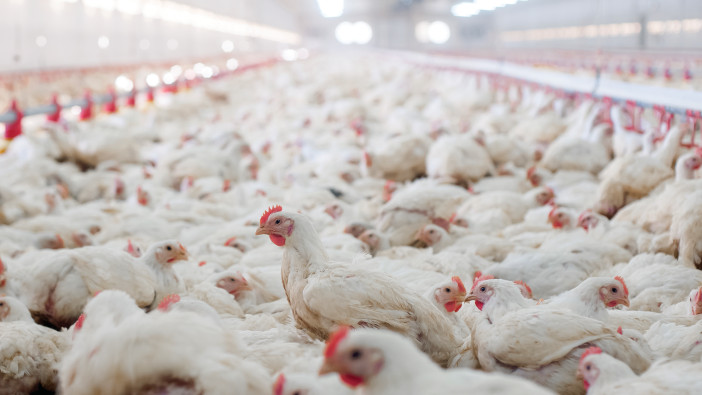By Charlie Reeve
EU broiler prices have been on an upwards trajectory throughout June and July, averaging 276 eurocents a kg for the week ending 24 July.
Prices were up by 1.9% compared with June and were 3.3% higher than the same month last year.
Broiler prices in the US have started to drop in recent weeks with a significant gap emerging between prices in the US and the EU.
Broiler prices in the US were the equivalent to 264.9 eurocents a kg in mid-July, which was more than 10 eurocents a kg discount to the EU, however this was still well above broiler prices in Brazil which were equal to 122 eurocents a kg.
EU broiler production has had a strong first half of the year, with production higher than the same period in 2022 and 2023.
In June, production was estimated to have risen again to roughly 800,000 tonnes, putting it at the highest monthly volume for more than three years.
Poland accounted for the largest share of total EU poultry meat production in 2023 at 21%, followed by Spain (13%), Denmark (12%), France (11%), and Italy (10%).
EU egg prices dropped to below the 200 eurocents a kg mark in the last month to average 194.8 eurocents a kg in mid-July, down by 0.8% on the previous month and 6.6% lower than the same month last year.
The main EU egg producers in 2023 were France, Denmark, and Spain with each accounting for roughly 14% of the total market share, this is followed by Italy at 12%. Total EU egg production was 6.78m tonnes in 2023, which was 0.7% higher than in 2022.
The UK was the EU’s largest export destination during the first four months of 2024, with 45,758 tonnes of eggs being imported into the UK from the EU.
This accounted for more than a third of total EU egg exports and was an increase of 4.4% compared to the same period last year.
Ukraine was the largest exporter of eggs to the EU with volumes up by 39% for the year to date. More than 22,000 tonnes of eggs were imported by the EU from Ukraine, which accounted for almost 64% of total imports.
The UK was the second largest exporter to the EU with 5,100 tonnes being sent during the first four months of the year.
This was a 45% increase on the same period last year but still considerably lower than the volume of eggs imported from the EU by the UK.


